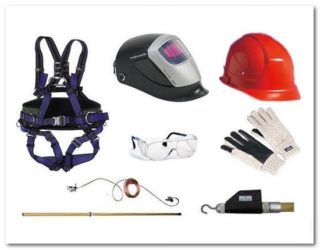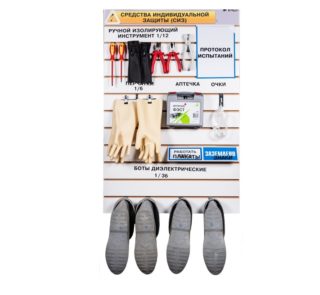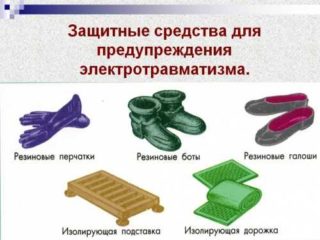There is always a risk of electric shock when using electrical equipment and common household appliances. The requirements of the current standards provide for the adoption of special measures of protection against electric shock. Their use reduces the risk of high voltage exposure to the human body. A reliable guarantee of safety is the means of protection against electric shock.
How to avoid electric shock

It is possible to avoid unpleasant consequences when working in power grids, provided that the Interindustry Labor Protection Rules are observed in the part related to the maintenance of electrical installations. In addition, the necessary electrical safety measures are regulated by a number of industry and national standards, one of which is represented by the current GOST 12.2.004–91. The provisions of these documents include the following sections:
- general security measures;
- organizational arrangements;
- technical methods of protection.
In the form of a separate section, they present the rules for working with network equipment.
The general provisions stipulate a wide range of issues, the main of which are:
- which personnel are covered by these rules;
- requirements for the state of electrical installations in terms of equipping them with protective equipment;
- requirements for operating personnel, as well as features of maintenance of technical systems;
- general order of work and their documentary support.
Network requirements for labor protection determine the rules for working in industrial and domestic power grids. They relate to the maintenance and repair of electrical appliances of various classes. These include such common wiring products as energy meters, sockets, junction boxes, and circuit breakers.
Classification of protective equipment
FROM
- collective protective products;
- individual means to protect a working person from high voltage;
- technical devices that ensure the safety of equipment operation.
The first category includes indirect means of protection: protective shields and barriers, warning posters and special signs. They make it possible to secure the operator during the work, both organizationally and technically.
Personal protective equipment
- protective insulating clothing;
- special shoes and glasses;
- rubber gloves and rugs;
- rubberized pads for the working tool.
For work in electrical networks, a special tool with insulated handles that protect against touch voltage is used.
In accordance with the provisions of the Interdisciplinary Regulations, admission to work is only permitted with personal protective equipment. According to the importance of the means used, they are divided into main and auxiliary devices and tools. The first group includes dielectric gloves, power tools with insulated handles and measuring pincers. The second group (additional) is represented by such items as dielectric galoshes and carpets, as well as insulating supports and pads.
Technical protection measures
The technical methods of protection against electric shock include the following measures:
- the use of electric wires in double insulation, supplemented by a protective sheath;
- use of special equipment: circuit breakers and residual current devices;
- compulsory grounding of all equipment and electrical appliances connected to the network.
Each of these approaches allows you to protect a person in an emergency - if double insulation is damaged, for example.
<
h2> Rules for selection, use and storage

You can use the help of personal protective equipment only if the established procedure for their use is observed. In accordance with the requirements of the Interindustry Rules, when applying them, the following recommendations are adhered to:
- it is allowed to use only those devices and tools that have a special marking indicating the manufacturer, the year of manufacture and the mark of the last verification;
- insulating electrical protective equipment may only be used for their intended purpose;
- instruments are used to measure electrical quantities for which they are designed;
- when working with them, it is not allowed to touch directly the working part located outside the limit ring (stop).
Situations are possible when damaged samples are found among the protective equipment. In this case, they are withdrawn from circulation in accordance with the procedures approved in the regulations.

The following requirements are imposed on the storage order:
- all measuring instruments and overalls are stored in securely closed rooms without the access of unauthorized persons;
- rubber and polymer products that are constantly in operation are kept in cabinets or on shelves separately from other protective equipment;
- all products in stock are stored only in dry rooms at an air temperature of 0 to 30 degrees;
- insulating rods, as well as measuring clamps and special voltage indicators are kept in conditions that exclude bending of their body and contact with foreign objects.
Rubber products are stored at a considerable distance from containers with acids, alkalis, oils and gasoline supplies. In addition, they need protection from direct exposure to sunlight and heat fluxes from heating devices. The recommended distance is at least one meter.
A protective device that allows you to protect people from electric shock is a very broad concept that includes not only individual objects. It also includes special organizational or technical measures that increase the safety of working with electrical equipment.











